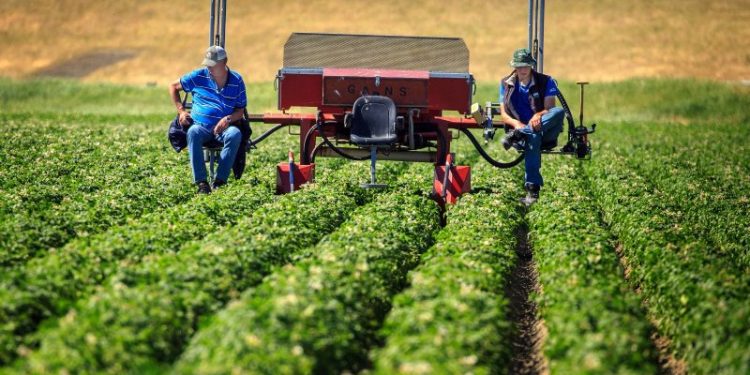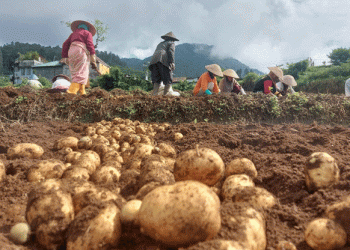This article explores the fascinating use of scent profiles as a potential indicator for virus infections in seed potatoes. Drawing on the latest data from Nieuwe Oogst, a trusted agricultural source, we delve into the research surrounding the detection of virus-infected seed potatoes through their scent. Discover the potential of this innovative approach to aid farmers, agronomists, agricultural engineers, farm owners, and scientists in the early identification and management of viral diseases in potato cultivation.
The scent emitted by seed potatoes may hold vital clues to the presence of virus infections, according to a recent report by Nieuwe Oogst [1]. Researchers have discovered that the unique scent profile of infected potatoes differs from that of healthy ones, offering a potential non-destructive method for early detection of viral diseases.
Viral infections, such as Potato virus Y (PVY) and Potato leafroll virus (PLRV), can have devastating consequences for potato crops, leading to reduced yields and compromised tuber quality. Early detection is crucial for implementing effective management strategies and preventing further spread of these pathogens.
Scientists have been studying the volatile organic compounds (VOCs) emitted by infected seed potatoes. These VOCs contribute to the distinct aroma associated with virus infections. By analyzing the scent profiles of potatoes using specialized equipment and techniques, researchers can identify specific VOC patterns indicative of viral diseases.
Preliminary studies have shown promising results in distinguishing between healthy and virus-infected seed potatoes based on scent profiles. This non-invasive approach has the potential to complement traditional diagnostic methods, providing an additional tool for farmers and agronomists in detecting viral infections early on.
The practical application of scent-based detection in commercial potato production is still under development. Further research and validation are necessary to refine the technique and establish reliable protocols. However, this innovative approach holds significant promise for the future of potato disease management, potentially enabling more targeted interventions and minimizing the economic impact of viral infections.
In conclusion, the utilization of scent profiles as indicators for virus infections in seed potatoes represents an exciting avenue for agricultural research. By harnessing the unique VOC patterns emitted by infected plants, scientists are paving the way for early detection and improved management of viral diseases. Incorporating this innovative approach alongside existing diagnostic methods can enhance the overall resilience and productivity of potato cultivation.
Tags: Agriculture, Seed Potatoes, Virus Infections, Scent Profiles, Non-Destructive Detection, Volatile Organic Compounds (VOCs), Potato Virus Y (PVY), Potato Leafroll Virus (PLRV), Disease Management, Early Detection.
Reference:
- Source: [Link to the report on Nieuwe Oogst]








